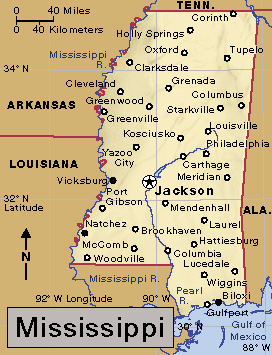Gulfport (pop. 72,696; met. area. pop 416,259) is the second largest city in Mississippi. Only Jackson has more people. Gulfport lies on the state’s southern coast, along the Gulf of Mexico.

Gulfport is the largest city in a metropolitan area formed by Hancock, Harrison, and Stone counties. Gulfport has a mayor-council government and, with Biloxi, is one of two seats of Harrison County. Gulfport was incorporated as a city in 1898.
Retail trade, hotels and casinos, and health care and social services are the leading employers in the Gulfport area. The city’s chief products include chemicals, metal and wood products, and processed seafood. Gulfport’s harbor helps make the city a transportation center. The Gulfport-Biloxi International Airport serves the area. Offshore, a section of the Gulf Islands National Seashore draws many visitors. Each July, Gulfport hosts the Mississippi Deep Sea Fishing Rodeo, a popular sportfishing competition.
In 1887, the site of Gulfport was chosen for the terminus (end) of the Gulf and Ship Island Railroad, and a town was soon established there. Captain Joseph T. Jones, a Pennsylvania oil tycoon and investor, took control of the bankrupt railroad in 1895 and completed its route to Gulfport by 1896. Jones also led efforts to improve Gulfport’s harbor, which was deepened and opened to ocean traffic in 1902. Gulfport’s location near Mississippi’s great pine forests soon helped the town become one of the nation’s leading lumber ports.
In 1969, Hurricane Camille damaged the city’s port and other coastal buildings. In 2005, Hurricane Katrina caused widespread destruction in Gulfport. The city’s population declined by about 10,000 in the year after the hurricane, but officials estimated the population had mostly recovered by 2007. Gulfport officials also worked to carry out a citywide redevelopment plan.
